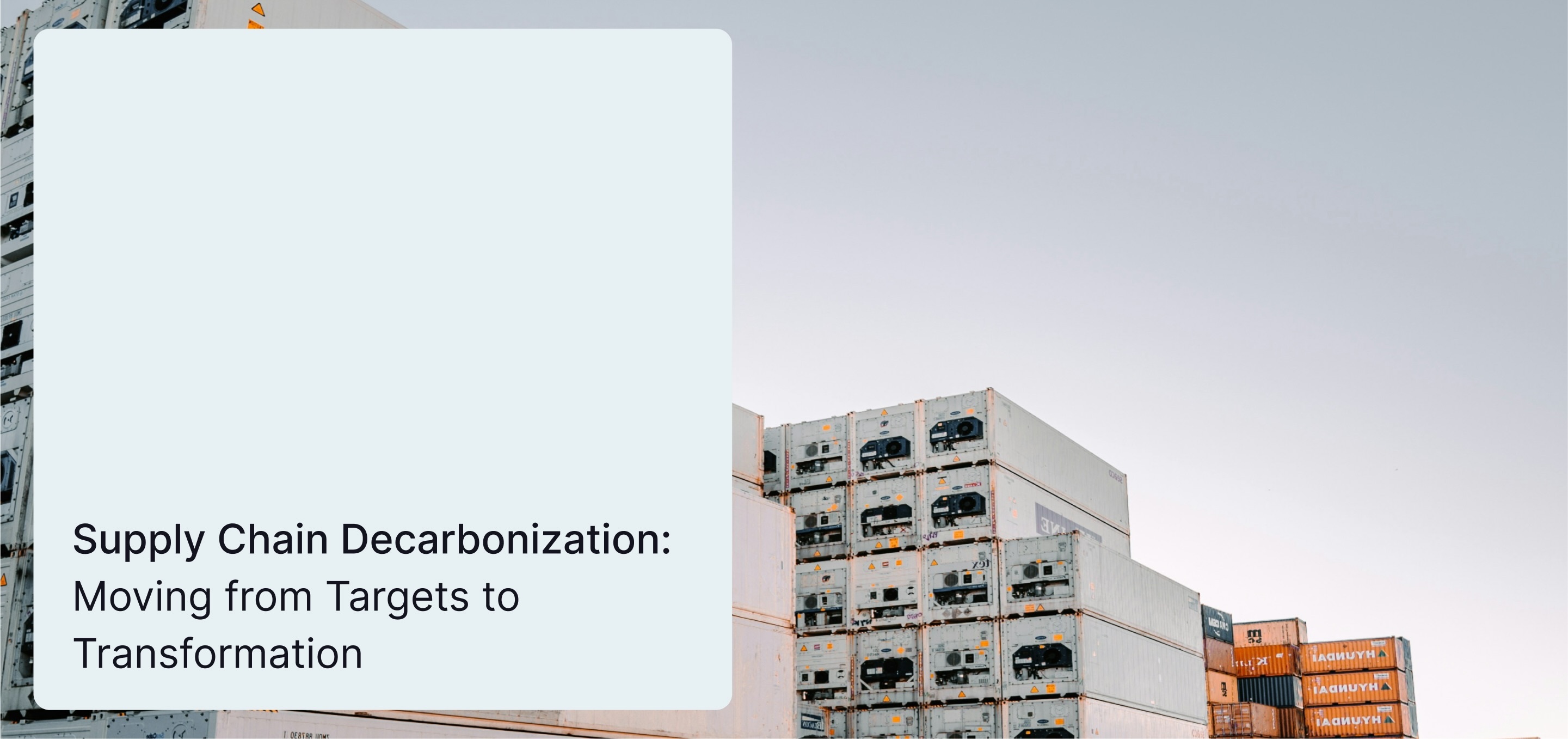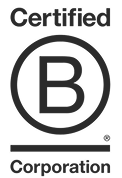While target-setting has long dominated corporate climate discussions, the world climate urgently demands action, rather than aspiration. When it comes to residual carbon emissions, leading companies are now leveraging their purchasing power and technology to transform supplier networks from a scope 3 challenge to a strategic advantage.
By enabling rather than merely requiring decarbonization across their broad ecosystem, these organizations aren't just meeting climate targets. They're building resilient supply chains that create a lasting competitive edge in a carbon-constrained economy through reduced compliance risk, enhanced brand value, and greater operational efficiency.
Here’s how.
Scope 3: the untapped frontier of corporate climate action
Researchers estimate that anywhere from 60 percent to 90 percent of attributable carbon emissions are generated up and down the value chain, meaning that the majority of emission reductions on the journey to net zero must come from third parties. While this presents an unprecedented challenge for corporate climate leadership, opportunities exist as companies work proactively to transform supplier relationships into strategic partnerships that can drive innovation, create resilience, and potentially reduce costs through collaborative decarbonization efforts.
The urgency is clear. While some companies are starting to achieve initial scope 1 and 2 climate targets through direct action like shifts in energy mix, reductions on carbon emissions, and energy efficiency measures, the next frontier lies in supply chains.
The time for action is now. As companies face 2030 interim targets that increasingly include scope 3 requirements, supply chain transformation is no longer optional. The regulatory landscape, from the EU's CSRD to California's AB 1305, is converging toward mandatory supply chain emissions reporting within the next five years.
While some organizations delay action hoping for regulatory shifts, leading companies are already transforming their supply chains to gain competitive advantage and build resilience.
The scope 3 dilemma: a different kind of challenge
While the same in terms of the carbon itself, abating scope 3 emissions presents a fundamentally different challenge than those of scope 1 and 2. It's one thing to change your own business practices (already not easy, due to budget constraints, technical issues, and so on). It's an entirely different responsibility to change what you have very little control over: your suppliers’ business practices. (Learn more about scopes 1,2, and 3 in our white paper, The Ripple Effect: Addressing scope 3 emissions in an interconnected carbon economy.)
Such limited control can manifest in several specific ways:
- The paradox of cost: Many companies find themselves demanding both price efficiency from suppliers while simultaneously expecting them to invest in costly decarbonization technologies.
- The visibility of fog: Seeing clear data across complex supplier networks continues to be a significant hurdle.
- The tightening of belts: Resource constraints, especially for smaller suppliers, limit their capacity to implement changes.
- The friction of focus: Misaligned incentives between buyers and suppliers create confusion along the decarbonization journey.
Data confirms this struggle. A 2024 report by Bain finds that 51 percent of 1,000 companies disclosing scope 3 commitments to CDP, the independent environmental disclosure system, are “well” or “slightly” behind where they should be to hit their 2030 targets. (By comparison, 36 percent of 1,883 companies disclosing scope 1 and 2 reduction targets are behind on their plans.)
This is why beyond-value chain mitigation through carbon markets and supplier empowerment strategies has become essential. As a corporate buyer, you can control that carbon removal happens and account for it, which is often easier and quicker than helping (and hoping) suppliers will decarbonize on your timeline.
From requirements to empowerment: a new paradigm
While the share of companies with supplier engagement programs versus actual progress remains too low — with Deloitte reporting that only 15 percent of companies currently report on their supply chain emissions — solutions are emerging as technology changes the game and leaders find a way forward.
At CEEZER, we see early movers increasingly evolving beyond simply imposing sustainability requirements on suppliers. Instead, they're creating ecosystems that enable and empower their supplier networks to participate in decarbonization journeys. This shift from dictating to enabling is proving to be critical for meaningful progress.
Here’s how our clients are transforming scope 3 complexity into strategic advantage.
1. Building collaborative supplier ecosystems
Successful organizations are creating foundations for collaboration by:
- Standardizing quality requirements across networks to create clarity.
- Establishing joint investment and incentive structures that align economic interests.
- Deploying technology that enables autonomous supplier participation without creating undue burdens.
- Measuring baseline performance accurately to establish a starting point for progress.
2. Creating an action framework
With collaborative foundations in place, leading companies are implementing structured programs by:
- Assessing and prioritizing supplier segments based on impact potential and readiness.
- Defining clear quality standards and parameters that are measurable and verifiable.
- Enabling controlled, autonomous execution that gives suppliers flexibility in implementation.
- Tracking real-time compliance and impact through efficient seamless digital platforms.
3. Deploying best-in-class technology
Advanced companies are leveraging purpose-built technology solutions to:
- Integrate with procurement and ERP systems for seamless data flow.
- Enable carbon market mechanisms to fund supplier transitions, providing financial incentives for decarbonization.
- Implement real-time monitoring and verification capabilities.
- Create scalable reporting across the ecosystem.
To help these leading companies thrive, CEEZER has created new technology to make complex collaboration easy, seamless, and secure. CEEZER Nexus is a purpose-built solution for enterprise-scale carbon credit management and direct supplier engagement, enabling decarbonization at scale. It allows buyers to establish clear science-backed requirements that suppliers can easily access and understand, helping to create easy access to applicable credits and solutions to meet expectations.
With CEEZER Nexus, suppliers can also track their own progress against these requirements in real-time, while buyers gain visibility into compliance across their entire supply chain. This way, enterprises move from demanding additional effort to offering a clear, actionable solutions that reduces alignment need, reporting burden and fosters a closer collaboration.
Indeed, the most significant insight from our clients is how the paradigm shift from requirements to empowerment creates mutual value. By providing suppliers with tools, resources, and incentives rather than just mandates, these companies are working with CEEZER to strengthen supplier relationships through positive engagement and accelerate decarbonization timelines through reduced friction.
Companies that enable rather than demand are seeing faster progress and stronger supplier participation — and are leading us into the scope 3 frontier with confidence that empowers suppliers to become partners in their decarbonization journey rather than obstacles to overcome. The companies that master this transition will not only meet their climate targets but build more resilient, transparent supply chains that create competitive advantage in an increasingly carbon-constrained world.
Speak to our team about CEEZER Nexus today to learn how you can turn your supply chain from a climate challenge into a strategic sustainability advantage.





